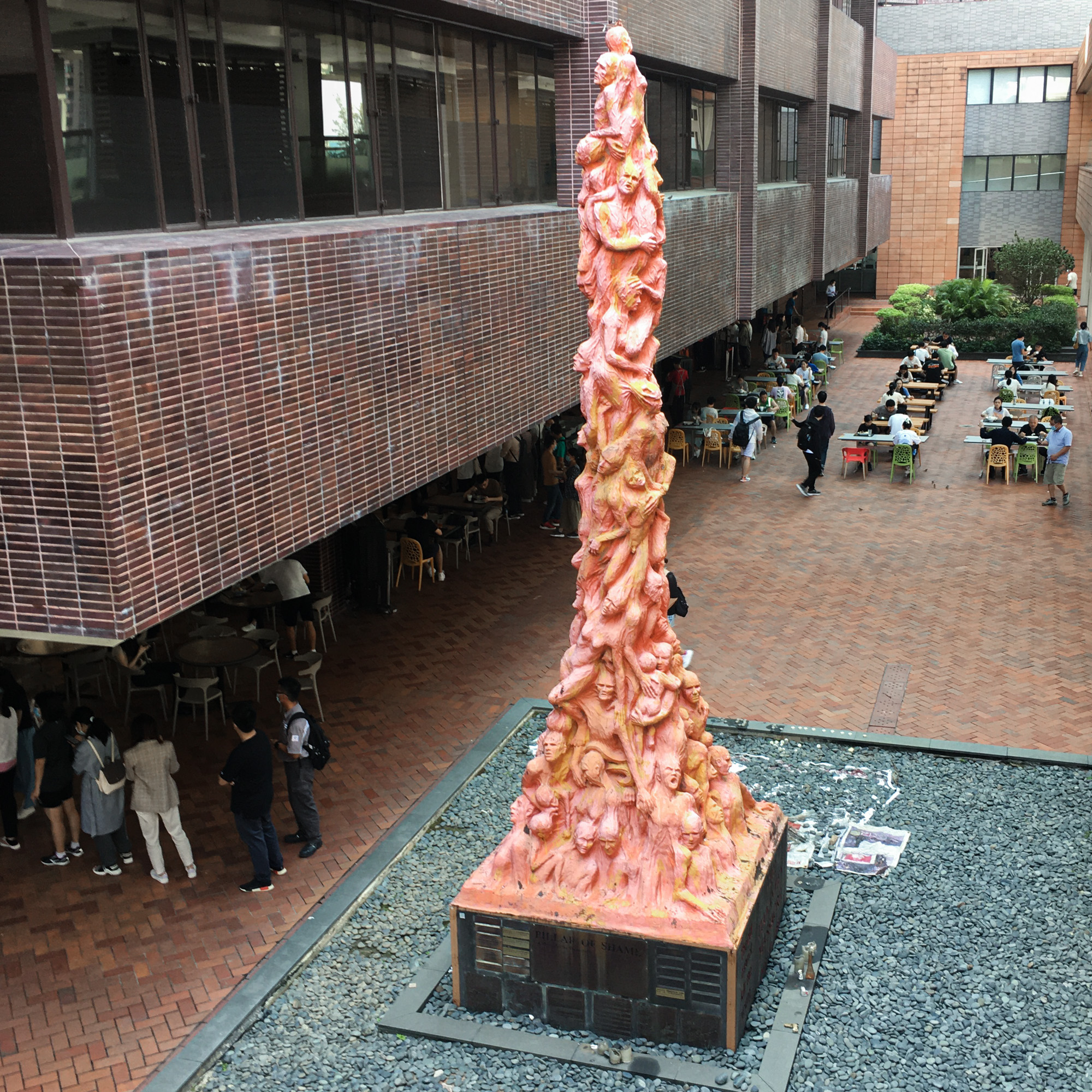HKU Orders Removal of 1989 Memorial from Campus
By Nicole M. Nepomuceno

Installation view of *JENS GALSCHI
The University of Hong Kong (HKU) has requested that the recently disbanded Hong Kong Alliance in Support of Patriotic Democratic Movements of China remove The Pillar of Shame (1996), commemorating the 1989 Tiananmen Massacre. The eight-meter-tall sculpture of writhing figures by Danish artist Jens Galschiøt has remained on HKU’s campus for 24 years to remember the victims of the deadly crackdown in Beijing on student-led pro-democracy protests.
Former Alliance board members Richard Tsoi and Elizabeth Tang received the order in a letter dated October 7 from the law firm Mayer Brown on behalf of HKU, which gave an October 13 deadline for the complete removal of the sculpture. According to the letter, if the Alliance fails to remove The Pillar by 5pm this Wednesday, “the Sculpture will be deemed abandoned and the University will not consider any future request from you in respect of the Sculpture, and the University will deal with the Sculpture at such time and in such manner as it thinks fit without further notice.”
In a letter to HKU for confirmation of their plan and clarification of their reasons, Tsoi emphasized that the university has a “social mission and historical responsibility” to keep the sculpture in its campus as it “[demonstrates] exactly the University of Hong Kong’s persistence to values such as freedom and justice.” On October 8, HKU explained in a statement to the media that their request follows the disbandment of the Alliance, an “external organization” that takes charge of the sculpture.
The sculpture’s creator Galschiøt was shocked to learn of his work’s impending removal from articles in the press, since HKU had not contacted him directly regarding its decision. Galschiøt helped erect The Pillar of Shame in Hong Kong and lent it to the Alliance for permanent exhibition in 1997 but remains its owner. He expressed concern that the small window of time given for the sculpture’s removal will lead to damage or its destruction, as a sculpture of that size would usually take two to three months with proper equipment to move. “I think they will destroy it. It is my sculpture and you are destroying a valuable piece of artwork,” he told Artnews, and suggested that he will take legal action if the work suffers damage.
A vertical column created with bronze, copper, and concrete, The Pillar of Shame portrays 50 human figures fused together and immortalized in expressions of anguish and suffering. Engraved at its base are the words: “The old cannot kill the young forever.” Students moved it onto the Haking Wong Podium of the HKU campus on June 5, 1997, after its display at the annual June 4 candlelight vigil in Victoria Park, despite disputes with the campus security and police. In a 1998 referendum hosted by the now-dissolved HKU student union, The Pillar received a mandate to stay in the school on a permanent basis. Every year since 2002, students and members of the Alliance have cleaned the sculpture to commemorate those who have lost their lives in 1989. Today, old flowers can be found at the bottom of the sculpture, along with the remains of a banner showing photographs of a replica of The Pillar of Shame erected in Denmark in 2020 by Galschiøt and Amnesty International Denmark, in solidarity with Hong Kong’s democracy movement.
Nicole Nepomuceno is ArtAsiaPacific’s assistant editor.








